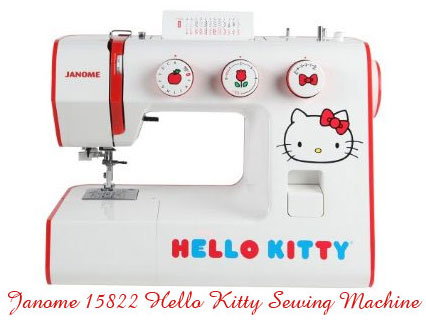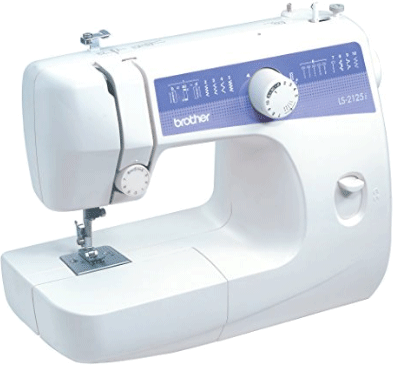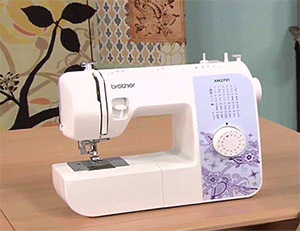 Teaching a child to sew can be extremely rewarding, especially when you see how proud they are after finishing their first project. Children as young as six are capable of using a sewing machine with close guidance and supervision. At some point, when their budding hobby takes off, they will be asking for a sewing machine of their own. When that time comes, will you know how to pick the best sewing machine for your child?
Teaching a child to sew can be extremely rewarding, especially when you see how proud they are after finishing their first project. Children as young as six are capable of using a sewing machine with close guidance and supervision. At some point, when their budding hobby takes off, they will be asking for a sewing machine of their own. When that time comes, will you know how to pick the best sewing machine for your child?
If you are in the market for a sewing machine to satisfy the budding seamstress or haute couture fashion designer in your family, there are a few questions to ask yourself before jumping into a purchase. Those of you who sew may have run through these questions the last time you bought yourself a machine. Run through them again if buying another machine and save yourself some possible headaches.
Buying a sewing machine for a child doesn’t necessarily mean buying a toy or a machine made for children.The most important thing to keep in mind is safety.
Age and Skill Level
How old is the child receiving the sewing machine? Are you buying for a young child who will need very close supervision or for a teen who has already used a machine unsupervised? A young child who can’t understand the buttons, levers and controls on a sewing machine may lose interest. Likewise, a machine that isn’t sophisticated enough to grow with a more accomplished teen, won’t hold his or her interest for very long. Much of your decision will be based on your child’s age and skill level.
Previously we covered buying a machine for a beginner. This same process should also apply to the older teen who is able to sew unsupervised and who can read and follow directions. For the rest of this post, lets concentrate on buying a machine for a younger child.
Commitment Level
Is this a new hobby or one for which he or she has shown a deep interest? If you are concerned your child’s interest in sewing may not last, or if you are trying to foster an interest in a child who hasn’t yet expressed a desire to learn to sew; you may want to look at a fully functional machine designed for children.
One way to keep the frustration level down for your child, is to buy the right sewing machine. Another way is to help him or her pick the right projects to work on. Pillows and tote bags are good first projects, as are pajama pants, shorts and simple tops. Both boys and girls  might want to make simple costume pieces like a western vest or a super hero cape.
might want to make simple costume pieces like a western vest or a super hero cape.
Janome makes a machine that may be just right for the young child. The Janome Sew Mini is very light and portable. It does not sew on heavy fabrics and does not have a light, but reviews are positive especially in regards to children learning to sew on the machine.
Budget
Some of you may think this should be at the top of the list. I put it here because of the abundance of affordable options for basic sewing machines.The price of these machines is sometimes barely more than a new video game and typically less than a new MP3 player, tablet device or smart phone and with a sewing machine your child can actually make something!
Regardless of your child’s age and skill level, there is an affordable machine to meet his or her needs.
Space
Another major consideration before buying a sewing machine is how much space you have to dedicate to your child’s hobby. Some sewing machines are lighter and easier to store when not in use. Others require a dedicated space
Ideally a machine that will be carried from room to room or stored in a closet and pulled out when needed, will have a carry handle and a hard protective cover or case.
 One sewing machine that meets all major requirements for a basic machine purchase is the Brother LS2125I Light Weight Basic 10-Stitch sewing machine. It features automatic bobbin winding, 4-step buttonholer, built-in carry handle, 10 stitches, free arm sewing and much more. This machine is easy enough for a beginner to learn on with supervision and sophisticated enough to last for many years.
One sewing machine that meets all major requirements for a basic machine purchase is the Brother LS2125I Light Weight Basic 10-Stitch sewing machine. It features automatic bobbin winding, 4-step buttonholer, built-in carry handle, 10 stitches, free arm sewing and much more. This machine is easy enough for a beginner to learn on with supervision and sophisticated enough to last for many years.
Features
Must-have features for a child’s sewing machine:
- Straight and zigzag stitch – Most children will sew basic clothing items and small crafts. These two stitches will take care of seams, hems and buttonholes.
- Reverse Stitch – This is especially important on a smaller machine where pivoting the fabric to sew back down the seam to reinforce it is difficult. With a reverse stitch you can back up over previous stitches to secure your seam.
- Free arm – Many items children might sew will be smaller and a free arm will allow your young sewist to easily maneuver this small pieces under the needle.
- Snap on presser feet – There may only be a couple of presser feet included with a basic child’s machine, but changing them shouldn’t require special tools.
- Drop-in Bobbin – Many basic machines for children do not have drop-in bobbins. While this isn’t crucial, this type of bobbin is much easier for children to handle on their own.
- Automatic bobbin winding – Again, the more convenient it is for your child to manage the necessary steps to sewing with his or her machine, the more likely it is your child will continue to enjoy learning to sew.
- Adjustable Stitch width and length – Adjustable stitch width and length are important for just about every sewing project -from making buttonholes to machine basting stitches.
Features that are nice to have:
- Automatic needle threader – I personally consider this a must-have feature, especially if you have shaky fingers or failing eyes.
- Presser foot selection – A variety of presser feet will expand the machine’s repertoire such as allowing you to insert zippers, make buttonholes, create fancy ruffles and much more. If a nice selection of presser feet does not come with the machine, are they available and how much do they cost?
- Accessories available to extend the machine’s functionality – Does the machine include all basic, necessary attachments? How many attachments are available for purchase to extend the usefulness of the sewing machine?
- Automatic buttonhole maker or system – For adults I consider this is a must-have feature. While this feature is very convenient for children, it is also typically a feature they can’t initially use on their own. If getting the automatic buttonholer takes you into another cost bracket, it isn’t necessary as long as the machine has adjustable widths and zigzag stitch.
- Variable speeds – Controlling the pressure they apply to the foot peddle may be a challenge to a child just learning to sew. Not only can sewing at fast speeds make it difficult to control your stitches, it can be dangerous for small hands. A variable speed machine can be set to a slower speed and the foot pedal will not cause the machine to sew any faster than the speed set.
- Needle up / Needle down – Having the needle land in the down position can be especially convenient to quilters or to anyone needing to pivot their work. This is a nice feature to have, but not a necessity. Teach your child to maneuver the needle down into the cloth before raising the presser foot to adjust their fabric and they won’t mess up their seam.
For another take on convenient sewing machine features you can read Linda’s post on the subject. You might not need all of these features for a child’s machine, but it is always good to know exactly what features do.
Support
The final consideration before buying is support. Will you purchase directly from a dealer? If so, what kind of service do they offer? Are they able to make minor repairs in their shop? Do they carry a full array of supplies specifically for the machine you are purchasing? Also, do they offer classes geared towards children? If they offer all of this, how much more are you paying for the sewing machine?
On the other hand, if you purchase from a big box store or online does that void the warranty since you aren’t purchasing from a dealer? What service are you giving up for the less expensive price tag?
Are you ready?
After reading as much as you can here and asking advice of friends and family members who have been through the same process, read as many reviews online as you can. To get you started, the following is a list of basic machines under $100. Let us know if we need to add any to the list.
Basic Sewing Machines Under $100
- Brother LS2125I Easy-To-Use Lightweight Basic 10-Stitch Sewing Machine
- Singer 2259 Tradition 20-Stitch Sewing Machine
- Brother XL2600i Sew Advance Sew Affordable 25-Stitch, Free-arm sewing machine (Please see our review of this sewing machine.)
- Janome Sew Mini Sewing Machine
- Kenmore 11206 Three Quarter Size Sewing Machine





